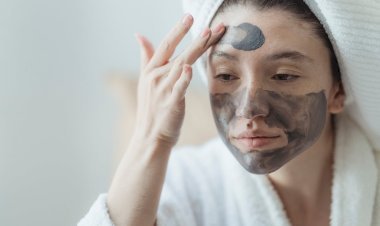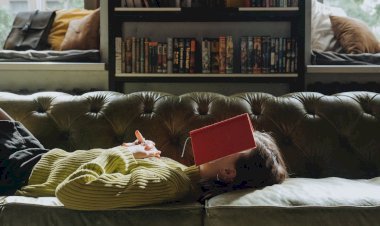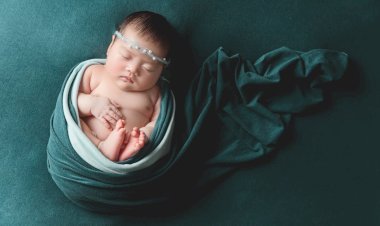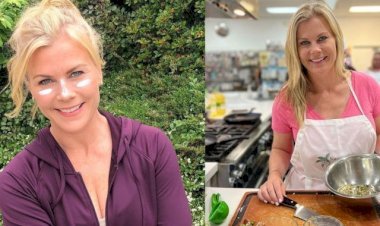Soft, Safe, and Non-Toxic: Finding the Right Carpet for Nursery
Choose the perfect carpet for nursery—soft, safe, and non-toxic flooring that offers comfort, style, and protection for your baby’s room.

When parents set up a nursery, the spotlight often goes to the crib, wallpaper, or cute toys. But one detail that truly shapes your baby’s world is the carpet for nursery. Think about it—this is the surface where your little one will crawl, take their first steps, and spend endless hours playing. The right choice doesn’t just elevate the room’s look; it creates a safe, soft, and toxin-free foundation for your child’s growth.
Why Carpet Matters in a Nursery
Unlike other rooms, a nursery needs flooring that’s both practical and protective. Hardwood floors might look sleek, but they’re noisy and slippery. Tiles are easy to clean but too cold and unforgiving. A well-chosen carpet for nursery changes everything:
-
It absorbs sound, so your baby’s nap isn’t interrupted by footsteps.
-
It cushions falls, offering peace of mind as your toddler learns to walk.
-
It adds warmth and coziness, turning the nursery into a soft play haven.
-
It encourages floor play, tummy time, and bonding moments.
Key Features to Look For in a Nursery Carpet
Not all carpets are created equal, and when it comes to nurseries, safety comes first. Look for:
-
Softness: Gentle fibers that protect delicate skin.
-
Non-Toxic Construction: No harmful VOCs, glues, or flame-retardants.
-
Hypoallergenic Fibers: Keeps allergens at bay for sensitive babies.
-
Easy Maintenance: Spills, crumbs, and little accidents should clean up quickly.
-
Certified Safety: Carpets marked with Green Label Plus, OEKO-TEX, or GOTS are trustworthy.
By prioritizing these qualities, parents can confidently select the best carpet for nursery that balances health and comfort.
Best Materials for Nursery Carpets
Different materials bring different benefits. Here’s what works best:
-
Wool – Luxurious, naturally flame-resistant, and durable.
-
Organic Cotton – Breathable, chemical-free, and super soft.
-
Eco-Friendly Synthetics – Affordable options that are now made with low emissions.
-
Cork & Foam Backed Rugs – Extra cushioning, great for play areas.
-
Jute or Sisal – Eco-friendly, though a bit rough, best as accent rugs.
Pro tip: Layering a large neutral carpet with a smaller playful rug can make the carpet for nursery both stylish and functional.
Non-Toxic Certifications Every Parent Should Know
Your baby spends most of their day close to the ground, so air quality is crucial. Look for:
-
Green Label Plus – Ensures minimal chemical emissions.
-
OEKO-TEX Standard 100 – Textile tested for harmful substances.
-
GOTS Certified Organic – The gold standard for organic fibers.
-
GREENGUARD Gold – Guarantees safe indoor air quality.
A certified carpet for nursery isn’t just décor—it’s a layer of protection.
Creative Styles & Nursery Design Ideas
A nursery should be both practical and magical. Carpets help bring that balance:
-
Neutral Base, Colorful Accents – A beige or cream carpet paired with playful rugs (stars, animals, rainbows).
-
Theme Carpets – Jungle, space, or ocean-themed carpets that double as learning tools.
-
Interactive Rugs – Alphabet rugs or hopscotch patterns that make the floor a fun learning zone.
-
Plush Luxury – A thick, fluffy carpet for nursery that feels like walking on clouds.
Think of the carpet as the stage for your baby’s first adventures—why not make it as imaginative as possible?
Maintenance & Cleaning Tips
Parents know that spills, crumbs, and stains are part of the deal. To keep your carpet for nursery looking fresh:
-
Vacuum regularly with a HEPA filter to reduce allergens.
-
Choose stain-resistant finishes when possible.
-
Spot clean gently with baby-safe solutions.
-
Consider machine-washable rugs for easy upkeep.
-
Air carpets occasionally to keep them fresh.
Cost vs. Value
Investing in a quality carpet saves stress (and money) in the long run.
-
Wool Carpets – $300–$800, excellent long-term value.
-
Organic Cotton Rugs – $100–$400, eco-friendly and soft.
-
Eco Synthetics – $50–$250, affordable and durable.
-
Accent Rugs – $50–$150, great for layering.
A higher-quality carpet for nursery may cost more upfront, but it pays off with durability, safety, and peace of mind.
Comparison Table: Best Nursery Carpet Options
| Carpet Material | Safety Level | Comfort | Maintenance | Best For |
|---|---|---|---|---|
| Wool | Excellent | Soft & Durable | Moderate | Long-term use |
| Organic Cotton | High | Very Soft | Easy | Eco-conscious parents |
| Jute/Sisal | Moderate | Rough Texture | Easy | Accent rugs only |
| Eco-Friendly Synthetic | Good | Soft | Easy | Budget-friendly |
| Cork/Foam Backed | High | Very Soft | Easy | Cushioned play areas |
Quick Buyer’s Checklist
When shopping for the right carpet for nursery, make sure it’s:
-
✅ Soft and baby-skin friendly
-
✅ Certified non-toxic
-
✅ Easy to clean
-
✅ Hypoallergenic
-
✅ Styled to fit your nursery theme
Conclusion
A nursery is more than a room—it’s the start of your child’s story. Choosing the right carpet for nursery ensures that story begins on a foundation that’s safe, cozy, and creative. From soft textures to playful patterns, the right choice provides warmth and protection while making the nursery a joyful space for parents and babies alike.
FAQs
1. What is the safest carpet material for nurseries?
Organic cotton and wool are the safest, thanks to their natural, chemical-free fibers.
2. Are wool carpets safe for babies?
Yes, wool is naturally flame-resistant and hypoallergenic, making it a durable choice for nurseries.
3. How often should I clean a nursery carpet?
Vacuum at least twice a week and spot-clean as needed to keep it allergen-free.
4. Should I get wall-to-wall carpet or a rug?
Rugs are flexible and easy to replace, while wall-to-wall carpets offer complete coverage.
5. Why is non-toxic certification important for nursery carpets?
It ensures the carpet for nursery won’t emit harmful chemicals into the air your baby breathes.
Read more: Fun With Feet: Creative Foot Activities for Kids, Fitness, and Self-Care

 alissaperry
alissaperry 






















